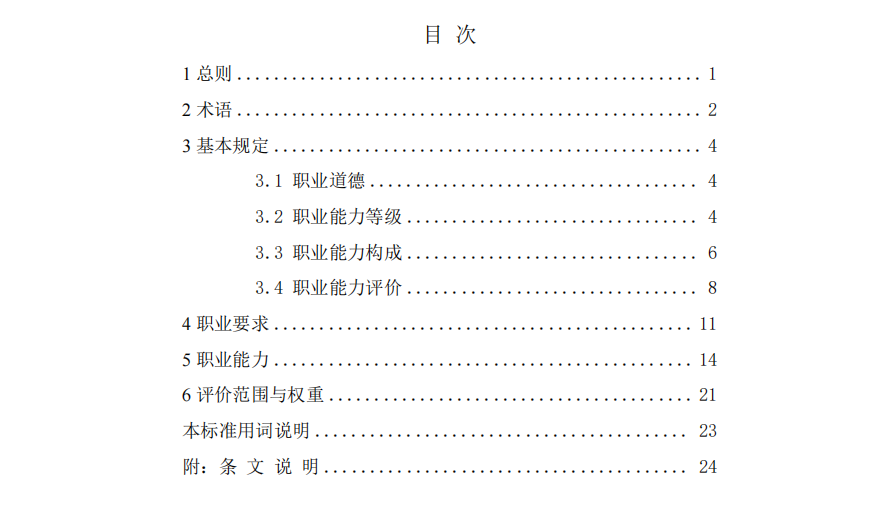Blockbuster Release 丨 Vocational Competence Criterion for Residential Interior Decoration Designers Co-edited by Tsinghua (Qingdao) Academy of Arts and Science Innovation Research Officially Released
The Vocational Competence Criterion for Residential Interior Decoration Designers, mainly edited by the China Building Decoration Association and Tsinghua (Qingdao) Academy of Arts and Science Innovation Research (TASA) and jointly prepared with the related organizations, has been officially released. The Criterion is the first benchmark used to assess domestic interior designers’ professional aptitude. The Criterion establishes the qualifications of residential interior designers, provides details on occupational presentation and grade estimation, offers a specific framework for evaluating the skills of a residential interior designer, clarifies the path for career advancement, and offers guidelines for businesses looking to hire qualified designers. Being the spearhead in China, it has made up for the lack of criteria for residential interior designers in China’s building and decoration industry.

The TASA has invested a lot of time and resources in its role as a co-editor. ZHAO Chao, Legal Person and Deputy Director of TASA, and WANG Jiansong, Executive Vice President of TASA, served as expert advisors and fully utilized Tsinghua University’s position as an academic leader to form a working group with specialists from top-tier universities. They spent three years finishing the work on criterion research and drafting, which was highly recognized by the industry.
During the process, to prepare the criterion from the perspectives of academic evaluation, specialty analysis, industry judgment, and practical experience, the Academy assembled an outstanding team with senior experts, scholars, and practitioners in the industry. They worked together to organize the content outline and ensure the work direction and method. They conducted in-depth research and gathered a significant number of opinions and experience to ensure that the criterion was both scientific and workable. With a focus on industry trends, new technologies, and customer expectations., the team has found a convincing theoretical and practical basis for developing the criterion.
From a macro point of view, as public housing is in the high-quality development process from “living in a house” to “living in a nice house”, home decoration takes on the significant social purpose of improving the home environment, optimizing the life scene, and reconstructing the lifestyle. From the market point of view, the home decoration sector is a downstream segment of the real estate market, and as a result, and it is impacted by both the tightness of the housing market and the progressive rise in the share of beautifully furnished rooms. The need for better home decoration design becomes greater because it adheres to one of the fundamental tenets of market competition: “Put design first, build on products, and highlight delivery.” Significant design is the competitive productivity of the home decoration sector, an essential component to the industry’s development and a crucial link in the chain of the industry. As a result, the persistent exploration of design power will improve the overall competitiveness of the home decoration sector by motivating businesses to pursue constant innovation and growth and propelling the technological advancement and transformation of the industry.
Quality supply underlines high-quality service principals, but the occupational system of home design has never provided a clear path for criterion ratings and promotions. The application of the Criterion will significantly influence how occupational capability systems are developed and how designers’ skills are improved.
From Scratch, the First Criterion in the Industry

During the process of preparing the criterion, the Academy worked with relevant organizations to conduct a thorough and in-depth investigation and research, summarize and analyze changes in the residential interior decoration designers’ teams, the development of technical skills, and changes brought about by the transformation of business model in China, as they incorporated the experience of executing national vocational criterion and releasing vocational competence criteria over the past two decades with overall consideration of the technological progress and career development in the current and future stage. Their accomplishments are forward-looking and practical.
Vocational Competence Evaluation System Identifies Professional Qualification
The criterion establishes the qualifications for certified interior designers and acts as a criterion for residential decoration enterprises when they are hiring, evaluating, and training new interior designers. By establishing the criterion, we intend to inspire home interior designers to voluntarily advance their general knowledge and strengthen their fundamental employability and qualification competitiveness. As a result, the criterion can progressively alter the stereotype of “underlining education background over skills and sales over design”. According to the national vocational criterion, together with the actual condition of enterprises and job requirements, the criterion highlights the development of professional abilities in new knowledge, new technology, and new construction method. It gradually upgrades the designers’ body of knowledge, vastly enhances their professional proficiency, and successively specifies the path of career advancement for those working in the home decoration sector.
The Academy will continuously strengthen cooperation with pertinent organizations of various industries, establish industry criteria, assist in their promotion and execution, strive to make more contributions to industry development and social progress, and point the way for sectors to move in a more professional, creative, and sustainable direction.
